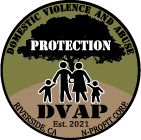Domestic violence is a devastating experience, but seeking help through the legal system can be a powerful step toward safety and healing. At Domestic Violence and Abuse Protection, Inc. (DVAP), we understand how intimidating the court process may feel, and we’re here to guide you every step of the way. This blog post will break down key stages of the legal process in California, ensuring you know what to expect and how to prepare. You are not alone, and support is available.
Filing a Police Report
Your first step in seeking legal protection often begins with filing a police report. If you are in immediate danger, call 911 for urgent assistance. When law enforcement arrives, they will document your report and may take further action such as making an arrest or providing you with information about next steps. When filing your report, make sure to provide as much detail as possible about the abuse, including dates, times, and any witnesses. If you have photos, texts, emails, or medical records related to the abuse, these can serve as valuable evidence later. Remember, DVAP is here to help you compile the documentation you need and connect you with resources to ensure your safety.
Requesting a Restraining Order
A restraining order is a legal tool that can provide immediate protection from your abuser. To obtain a restraining order in California, you will need to fill out specific forms, which can be overwhelming. DVAP offers guidance with the restraining order process to help you through each step. Once the forms are submitted, a judge will review your request and may grant a temporary restraining order until a hearing is scheduled. It’s important to note that you can request different types of restraining orders, such as emergency, temporary, or permanent orders; our team can help you determine which option is best suited for your situation.
Preparing for Court Hearings
Court hearings can be one of the most challenging parts of the legal process for survivors, as you may need to provide testimony or face your abuser in a legal setting. Before your hearing, gather all relevant documents and evidence to support your case. At DVAP, we understand how stressful this step can be, and we provide not just logistical support but also emotional support. Additionally, you are allowed to bring a support person to sit with you during the hearing if it helps ease your anxiety. The court process can feel intimidating, but it is an opportunity to have your voice heard and your story validated.
Post-Court Follow-Up
After your court hearing, if a restraining order or other protective measures are granted, make sure to maintain a copy of the order with you at all times. It’s also important to immediately share copies with local law enforcement and anyone directly involved in helping you stay safe, such as your workplace or childcare providers. DVAP can help you create a personalized safety plan to ensure you remain protected after court proceedings. We also connect survivors with counseling, housing assistance, and community resources to help empower you on your healing journey.
You Don’t Have to Do This Alone
Navigating the legal system can feel confusing and overwhelming, but it’s an important step toward regaining your safety and peace of mind. At DVAP, we stand with you, empowering survivors of domestic violence through advocacy, support, and protection. Whether you need guidance with the domestic violence court process in California, help filing for a restraining order, or someone to stand by you in your time of need, we’re here to help.
Are You Experiencing Domestic Violence or Abuse? DVAP Is Here To Help
Domestic Violence and Abuse Protection, Inc. is a non-profit organization committed to protecting the victims of domestic abuse. When restraining orders are not enough, we are there to provide the determined protection you deserve. We are located at 3900 Orange St. Riverside, CA. Call us at (951)-275 8301 (24 hours). Alternatively, you can email us at admin@dvapriverside.org.






